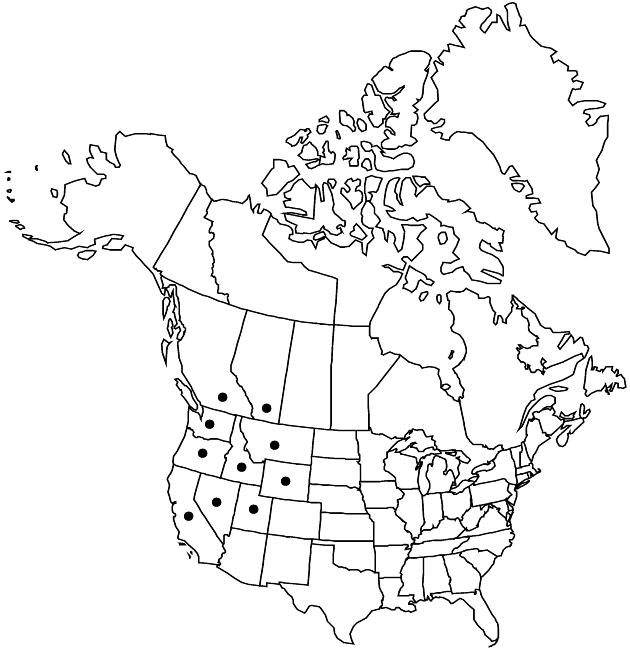Hieracium scouleri
Fl. Bor.-Amer. 1: 298. 1833.
Plants (15–) 35–60+ cm. Stems proximally usually piloso-hirsute (hairs 1–8+ mm) and stellate-pubescent, sometimes glabrous, distally usually piloso-hirsute (hairs 1–8+ mm) and stellate-pubescent, rarely stipitate-glandular as well, sometimes glabrous. Leaves: basal 0 (–5+), cauline (3–) 5–10+; blades lanceolate, oblanceolate or narrowly oblong to elliptic, 50–100 (–200) × 10–25 (–35+) mm, lengths (3–) 4–8+ times widths, bases cuneate, margins entire or denticulate, apices obtuse to acute, faces usually piloso-hirsute (hairs 1–5+ mm) and stellate-pubescent, rarely glabrous. Heads (3–) 9–25+ in corymbiform to thyrsiform arrays. Peduncles usually stellate-pubescent, sometimes piloso-hirsute and/or stipitate-glandular as well, rarely glabrous. Calyculi: bractlets 5–13+. Involucres campanulate, 8–10 mm. Phyllaries 12–21+, apices rounded to acute, abaxial faces piloso-hirsute, stellate-pubescent, and stipitate-glandular. Florets 20–45+; corollas yellow, 10–12 mm. Cypselae (redbrown or black) columnar, ca. 3 mm; pappi of 32–40+, white or stramineous bristles in ± 2 series, 6–7 mm.
Phenology: Flowering Jun–Sep.
Habitat: Disturbed sites, openings in pine forests and sagebrush, borders of meadows
Elevation: 400–3000 m
Distribution

Alta., B.C., Calif., Idaho, Mont., Nev., Oreg., Utah, Wash., Wyo.
Discussion
Selected References
None.
Lower Taxa
"fine" is not a number.